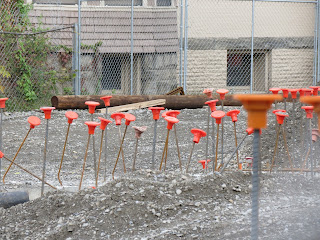We wish all of you who read our blog and attend our classes a Merry Holidays and a Happy New Year! We hope your 2019 is better than your 2018 and may it be healthy, prosperous, and joyful!
 |
| Rockefeller Center Christmas Tree |
2019 will bring some changes to
Future Environment Designs Training Center (#FEDTC). The first change is to continue to grow our online training by providing training tokens to our clients who attend our asbestos & mold courses. This added value to our current courses continues to distinguish us from our competitors. So we can add training courses our clients/students would be interested in, we are asking our attendees for suggestions for classes we can develop into online training courses. In addition, we are strongly considering becoming a New York State Education facility (we hope to have the financing for this undertaking within 2-3 weeks of the New Year). This would allow us to offer the New York City training courses and provide the
Site Safety Training cards. It would also require us to expand the number of training instructors we use. This will be a major undertaking and as many of you who know me, will take tremendous courage on my part to overcome my fears related to trusting others with my business. 2019 is already starting on a good beginning with several courses almost fully booked in the first quarter.
 |
Bergdorf Goodman Window
|
No sooner than the New Year of 2019 rings in, New York City will be going through several changes. The asbestos amendments to Title 15 will go into effect January 6, 2019, and the Indoor Allergen Rule goes into effect on January 16, 2019. In New York State before the New Year hits (December 31) the minimum wage will go up. In addition, don't forget to save the date for the Professional Abatement Contractors of New York's (PACNY)
23rd Annual Environmental Conference on February 27-28 & March 1, 2019, at
Turning Stone Resort & Casino in Verona, New York. We will be your host for the February 27th, the proficiency day, where we will be discussing asbestos inspections/survey among other things. We hope to see you there! Again, we wish you a Merry Holidays & a Happy New Year!
Related Stories:








